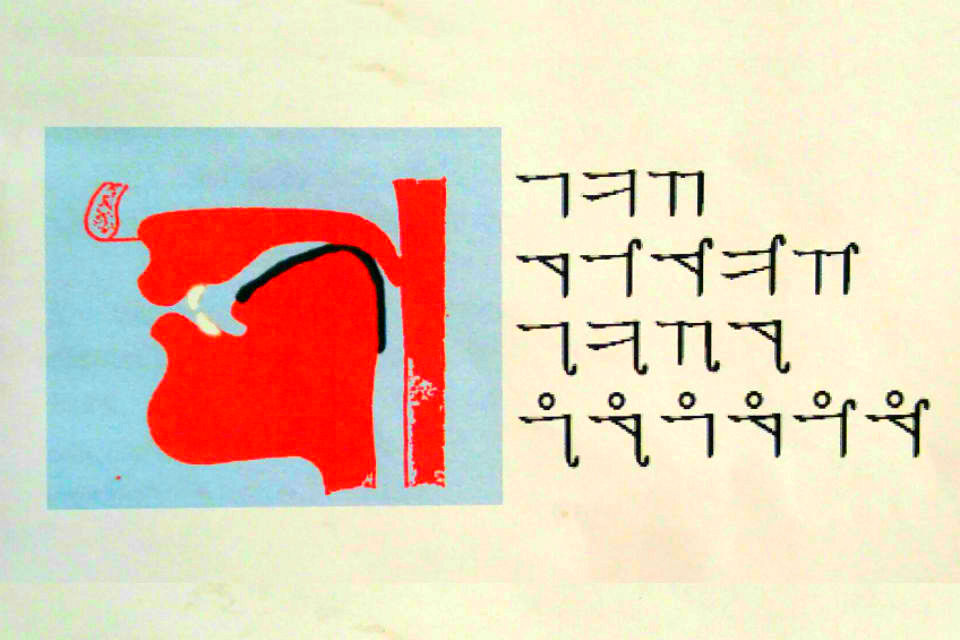
Is North Korean Different From South Korean?
How different is the language of North Korea from that of South Korea? Are there syntactic and grammatical differences due to the isolation of North Korea?
In 2004, North and South Korea made a historic agreement to compile a “grand dictionary of the national language” (Gyeoremal-keunsajeon). Historically hostile relations between the two Koreas meant that cultural cooperation — any cooperation — between them was a rarity, but inter-Korean relations in those years were enjoying a thaw, and language scholars from both halves of the peninsula prepared to meet regularly and hash out definitions of more than 330,000 words.
The Gyeoremal-keunsajeon project aimed to restore unity to the Korean language after more than half a century of divergent evolution on a divided peninsula. But since then, its fate has bounced around in the turbulence of deteriorating ties between North and South. Now, 13 years later, it is about 76 percent complete.
But after almost 70 years apart, how differently do North and South Koreans speak?
First, it’s worth remembering that Korea is rich in regional dialects. It’s not as if all Koreans were speaking in exactly the same way before their peninsula was divided into two states in 1948. Still, most regional dialects were mutually comprehensible, with the exception of the local tongue used on Jeju Island — which has actually been recognized as a distinct language.
Since division, a number of socio-political words — for example, inminban, a type of political neighborhood watch unit — have entered common usage exclusively in the North. And the South’s more rapid development and urbanization means that some timeless traditions and their associated words may now survive only in the North, such as the “sorghum stilts” that confounded one translator who took on a North Korean text while relying on South Korean resources.
But the biggest source of discrepancy is the torrent of loanwords — mainly from English — that has entered South Korea in recent decades. While North Korea is notoriously self-isolated, the South is a voracious consumer society that sucks in foreign products, concepts, technology and culture in real time. In 2002, academics had already identified more than 24,000 foreign loanwords used by South Koreans.
In late 2016, the committee in charge of compiling the Gyeoremal-keunsajeon estimated that there was now a 38 percent difference in regular vocabulary and 66 percent difference in specialist terms used in North and South Korea.
In 2015, AP listed some typical differences:
“— South Koreans use the English loan word ‘juice’ but North Koreans say ‘danmul,’ or ‘sweet water.’
— South Koreans watch a ‘musical’ but North Koreans see a ‘gamuiyagi,’ or ‘music and dance story.’
— ‘Suryeong‘ is the revered title for North’s founding leader and his son, but in the South it’s a historical term referring to a medieval regional or faction leader.
— The sea creatures that South Koreans call ‘cuttlefish’ are known in North Korea by the word South Koreans use for ‘octopus.’
— The term ‘elderly person’ is considered neutral in the North, but pejorative in the South.
— South Koreans wash their hair with ‘shampoo’ but North Koreans use ‘meorimulbinu,’ or ‘hair water soap.’
— The word ‘dongmu‘ is used in North Korea to refer to a revolutionary colleague, but South Koreans seldom use the term.
— A ‘dosirak‘ is the South Korean word for a lunch box, while North Koreans call it a ‘bapgwak.’
— South Koreans use the English loan phrase ‘skin lotion’ but it’s ‘salgyeolmul,’ or ‘skin water’ in the North.”
Until unification, it seems that North Korean defectors living in South Korea will remain hardest hit by these language differences (almost no South Koreans defect to the North). Many reports focus on embarrassment among newly-arrived defectors not understanding South Korean loanwords — like the English “self-service” — and fearing discrimination as a result of not fitting in 100 percent. Although this is undoubtedly a concern for most defectors, it’s far from mutual incomprehensibility.
Hanawon, the state-run South Korean institute in charge of preparing defectors for life in the South, provides education to help smooth the transition. And one South Korean company released a smartphone app for “translating” several thousand different words from North to South Korean and vice versa.
But despite awkward moments, North and South Koreans today have few real problems understanding each other. Look at it this way: if an unknown piece of vocabulary came up, one Korean could easily explain it intelligibly to the other using alternative Korean words.
If an English or American person heard an Australian say “I left my stubby in the servo dunny when I was crook,” they might not know what it meant. But rarely would they worry about traveling to Australia because of a “language barrier.” The same goes for Koreans: Few South Koreans had difficulty understanding their Northern counterparts in the few years when they were able to take tours to Kaesong and Mt. Kumgang, both located in the North.
But ultimately, greater language unity can only help Koreans from both sides of the DMZ as they try and rebuild ties before and after unification, should it ever happen.
As Ko Un, a renowned South Korean poet and president of the joint North-South Korean board for compiling the Gyeoremal-keunsajeon, puts it:
“Each word of our language represents our spirit from past, present and future. It is the vessel to embrace our emotions and search for truth for thousands of years. Then, we can truly get rid of remnants of foreign occupation and reconcile the past of two separated Koreas via our tongue.”
Ben Jackson authored this article.
Cover image: Illustration from the cover of “International Korean Phonetic Alphabet: Universal Visible Speech.” (Source: Prof. Lee Hyun-bok)
*
Read more about the changing nature of Hangeul, the Korean alphabet:

